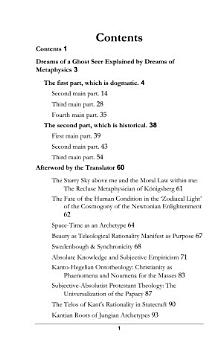Dreams of a Ghost-Seer
About this ebook
This Reader's Editon edition contains an Afterword by the translator, a timeline of Kant's life and works, and a helpful index of Kant's key concepts and intellectual rivals. This translation is designed for readability, rendering Kant's enigmatic German into the simplest equivalent possible, and removing the academic footnotes to make this critically important historical text as accessible as possible to the modern reader.
This work examined the spiritualist claims of Emanuel Swedenborg through a biting satire that has mystified readers since its publication, generating two opposed interpretations: most scholars read it as a skeptical attack on mysticism and dogmatic metaphysics, while others argue it reveals Kant's profound though concealed debt to Swedenborg's ideas behind a mask of irony. Published anonymously after Kant purchased and read Swedenborg's eight-volume Arcana Coelestia, which he described as "stuffed full of nonsense," the book used Swedenborg as a whipping post to critique rationalist metaphysicians like Wolff and Crusius, comparing their speculative "dream castles" to the visions of spirit-seers and suggesting both build elaborate systems without empirical foundation. Kant's attitude was deeply ambivalent: in letters he expressed "a slight inclination" toward belief in Swedenborg's paranormal accounts and admitted difficulty devising "the right style" to avoid exposing himself to derision, while in the text itself he called spirit-seers "candidates for the asylum" yet described certain Swedenborgian doctrines about humanity's dual nature and belonging to both material and spiritual worlds as "sublime." The treatise's two-part structure placed criticisms of Swedenborg in the center while subtly qualifying them in the margins, constructing a speculative reconstruction of a cosmos divided into material and spiritual realms before subjecting this very metaphysics to parody, marking a turning point in Kant's disillusionment with dogmatic metaphysics and his movement toward the critical philosophy that would restrict knowledge claims about the supersensible.







